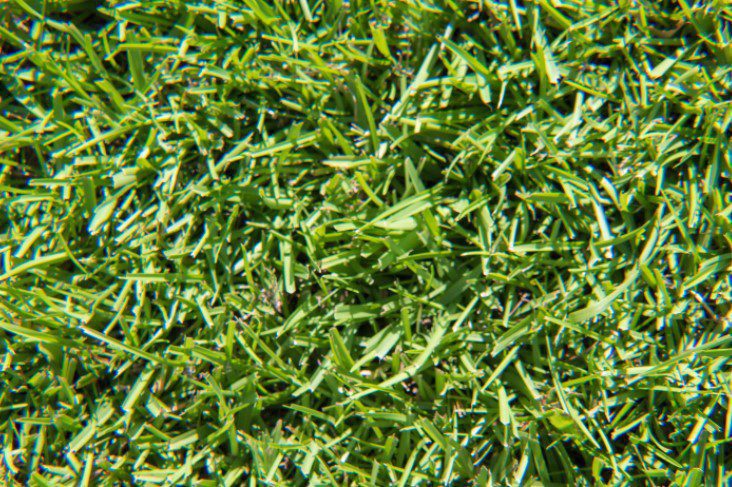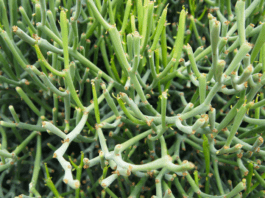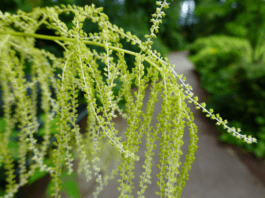What Is Centipede Grass
Centipede grass is a medium raw, textured, yellow-green perennial turf. It takes full sun or high pine shade for good growth, and people should not plant them under oak trees.
Centipede’s popularity is mainly because of its low fertility requirements, which result in slow growth and reduced maintenance. Over-fertilization can cause centipede to decline and, over time, die.
How To Make Centipede Grass Spread
Propagation: Seeds
We propagate centipede grass from seed, plugs, and sod. The most frequent propagation method is seeding (one pound of seed to 3,000 square feet). Centipede seeds are tiny; therefore, a problem is even distribution, whether by drop-type or cyclone spreader.
To help plant seed evenly, mix five pounds of dry sand and one pound of seed. Spread seed in several directions.
Before planting the seeds, ensure the soil temperatures are 70 degrees F day and night. Commonly in late May or early June, the temperature reaches a constant 70-degree temperature.
Centipede seeds have a hard coat. As a result, they will take a couple of weeks to germinate. Usually, daily watering is what it takes for an initial couple of weeks. Water in the morning and apply about one-quarter- to one-half-inch.
After germination, water the young grass deeply (moisture should penetrate 6 inches deep) each other day for seven days, go to every third day for a week, and wait five days before watering again.
Each time you extend the dry period between waterings, you allow the roots to grow deeper as they hunt for water.
Propagation: Plugs
To plug a centipede grass lawn, you can buy pre-grown plugs or make your own by cutting sections of sod squares into thirds. Space the small plugs about 6 inches apart and the larger plugs 6 to 10 inches apart.
Alternate the rows, so it looks like a checkerboard – this helps reduce erosion from water and allows the lawn to look fuller quicker.
The closer the plugs, the quicker they grow together to make a lawn—water every day for the initial week or two, then water twice a week. Always water deeply.
Propagation: Sod
The quickest method of centipede grass lawn establishment is sodding.
Before you lay the sod, apply some Miloganite to the ground to help in the rooting process.
Miloganite is organic, so it will not hurt new root growth.
Remove old plant cover. Lay the sod onto a well-prepared soil bed that has been loosened.
Once the sod is laid, water adequately to apply a half-inch of water, allow it to dry for an hour, then roll the sod with a roller and water again and roll.
The rolling process removes air pockets from under the sod and allows the roots of the sod to make better contact with the loosened soil.
Water every day for the first two weeks, always in the morning, and apply a half-inch of water each time. Then apply water twice a week for the next two weeks and then skip to five days before the next watering. After the fifth day, miss water once or twice a week.
Fertility
Centipede grass grows successfully with limited or no fertilizer applications after establishment. Some of the best centipede lawns have not had fertilizer applied for several years.
For the best appearance, make one or two fertilizer applications during the growing season – once in the springtime after the grass grows and again in mid-summer (around July 4).
Use either a 15-0-15 at 4 pounds per 1,000 square feet or a 16-4-8 at 3 pounds per 1,000 square feet.
Water
Even though the centipede grass can tolerate a fair amount of drought stress, watering at regular intervals will ensure a healthy and attractive lawn. Apply one-half to 1 inch of water per week to sandy soils and a single application to clay soils.
A healthy centipede lawn should not need to be watered any more often than once every five to seven days. This is true even in the hot dry summer. If the lawn dries out too quickly, find out what the problem is and fix it.
The sprayer system may not be giving out sufficient water or making it out unevenly. The ground may be hard or the turf may be thatchy.
De-thatch if the thatch layer is over one-half inch thick. Aerate the lawn if the soil is solid. Use an aerator that will get rid of plugs up to three inches deep.
Mowing
Because of slow growth, I mow centipede grass lawns at the height of 1 and one-half to 2 inches in height. With these dry conditions, keep the mower closer to the 2-inch height.
Insects And Diseases
Centipede grass has a couple of significant pest issues that are typical.
“Large patch” is a fungal infection that leads to circular grass strips turning brown and dying. These stretches may appear out two or three feet across in spring but can swiftly spread to encompass 10 feet or more within a few weeks. This condition diminishes in the summertime, and fresh grass usually comes back into damaged sections.
The extensive patch is reinforced by over-fertilization, fertilizing too soon, over-watering, insufficient drainage, and extreme thatch degrees. Altering these issues will diminish disease pressure, yet fungicide treatments are generally desired to deal with this infection.
Lawn fungicides have triadimefon or azoxystrobin function effectively for handling the wide patch. These products can be administered in spring. Still, the best results appear from fall applications, even if manifestations are not present. If your lawn has a substantial patch
this spring, sketch out the afflicted areas and spot-treat them this fall. Ground pearl is a sort of insect that lives in the ground and seriously impairs most grasses.
Sections infected with ground pearl change yellow, then brown, and die. No grass will come back into damaged areas.
The miniature, round, tan-colored ground pearls can be located in the soil at the boundary of deteriorating areas.
Sections affected by ground pearl become broader gradually, growing about one foot in width each year. While ground pearl will sustain all types of warm-season turfgrasses, the centipede is critically impaired because of its poor vigor.
There is no alternative to treat ground pearl still; zoysia grass tolerates its feeding better. In most instances where ground pearls are an issue, it is not viable to grow centipede grass.
Trees, shrubs, and perennials are not disturbed by ground pearl and can be grown in infested areas.
Tip Of The Week
If you have already pruned shrubs, early June is a good time to make a second light cut to cause side branching and create a thicker looking plant





